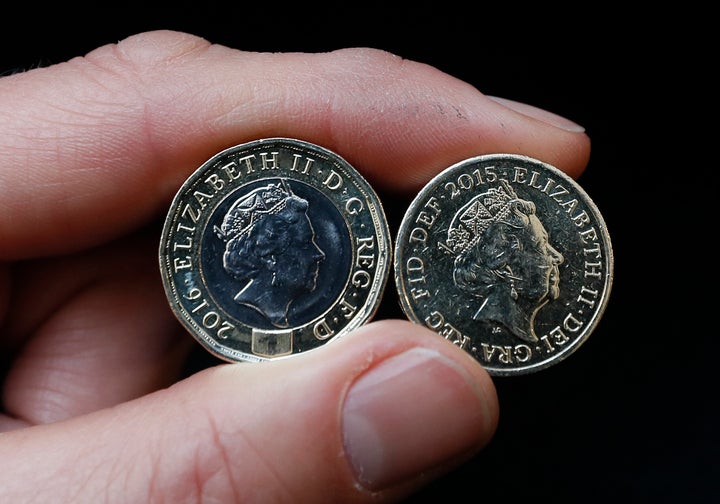
Not since our notes changed from paper to polymer has the Royal Mint caused such a kerfuffle ― today, the King Charles quid officially entered circulation.
Three million or so of the new coins have hit banks and post offices nationwide. To highlight the King’s love of nature, designs on the back of the coins feature bees; on the front, of course, is his royal likeness.
The shape of the coin, on the other hand, hasn’t changed. It’s still a dodecagon, or 12-sided shape.
We’ve written before at HuffPost UK about why we call a pound a “quid.” But why does the coin have 12 signs to begin with?
It’s partly to do with counterfeiting
None other than the Royal Mint themselves say it’s a security measure.
The 12-sided pound coin, which was introduced in 2017, “has a number of features that make it much more difficult to counterfeit,” they say.
Firstly, 12 sides are a right pain to remake (especially compared to the previous 0).
Secondly, the coin uses two types of metal (bimetallic) ― “The outer ring is gold coloured (nickel-brass) and the inner ring is silver coloured (nickel-plated alloy).”
That can make the coin harder again to reproduce outside of The Royal Mint.
The 12-sided coin also has grooves on alternate sides, some “very small lettering on the lower inside rim on both sides of the coin” indicating the value and date of issue, and “an image like a hologram that changes from a ‘£’ symbol to the number ‘1’ when the coin is seen from different angles.”
Basically, the more fiddly the coin is to make, the harder it is to recreate.
And as if the 12-sided, details-heavy coin wasn’t tough enough to remake,The Royal Mint adds that “high-security feature is built into the coin to protect it from counterfeiting in the future.”
Woah. So it’s all safety?
That seems to be a big consideration, though The Royal Mint adds that some features can make finding a quid in your pocket a little easier too.
“Its distinctive shape makes it instantly recognisable, even by touch,” they say.
They also shared that “The coin’s design reflects the United Kingdom’s heritage and superb craftsmanship.”
But yes, safety seems to have been at the forefront of their mind ― prior to the change, one in 30 £1 coins were counterfeit, they say.
They changed it to “reduce the costs of counterfeits to businesses and the taxpayer.”
Who knew so much thought went into the humble pound coin?